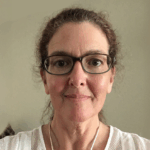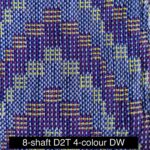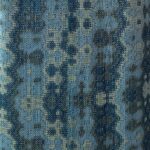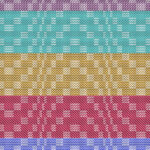
I have been weaving for over 50 years, learning to weave as a child from my mother. I have always been fascinated with pattern and block designs, finding ways to maximize both on four shafts before moving on to multi-shaft looms. For the past 20+ years, I have been exploring the interaction of colour and structure to develop increasingly complex designs. I have taught and published articles on tessellations, double two-tie, and parallel weaves, as well as other topics, in the Complex Weavers Journal. My work has been accepted into, and won awards at local, regional, and international exhibits.

Double Two-Tie Four-Colour Double Weave
Extended parallel threadings are used to create four-colour interactions from two warp and two weft colours in four-colour double weave. I have expanded on this idea by creating extended double two-tie (D2T) threadings, which not only double the number of pattern blocks, but also triple the number of double-weave colour interactions which can be created from two warp and two weft colours. I will demonstrate this new method of drafting “four-colour” double weave using D2T threadings, as well as the new colour interactions. Other uses for these extended D2T threadings will also be demonstrated.
This session will be captured for the Weavers Handshake, CW’s online, on-demand learning platform.

Drafting Innovations Using the Schultz System
My new method of drafting double two-tie (D2T) block designs and novel structures uses a parallel treadling arrangement. While this is a particularly useful way to work with block designs, that isn’t the best part.
A 4-end/4-pick tie-up can be thought of as four quadrants consisting of four 2×2 squares. On a straight twill threading or treadling, the relationship between those four quadrants changes when the structure is woven in a different direction or starts on a different end/pick. However, when the same structure is placed on a parallel threading and treadling, the relationship between those four quadrants becomes fixed regardless of the direction it is woven in or the starting end/pick. The effect of this is powerful. It allows these structures to be easily manipulated and combined in D2T block designs, and it becomes a new language to uniquely and specifically describe every 4-end/4-pick interlacement.
This session will be captured for the Weavers Handshake, CW’s online, on-demand learning platform.


